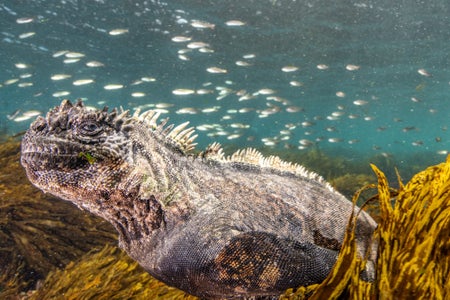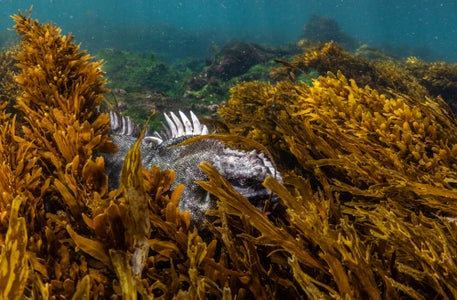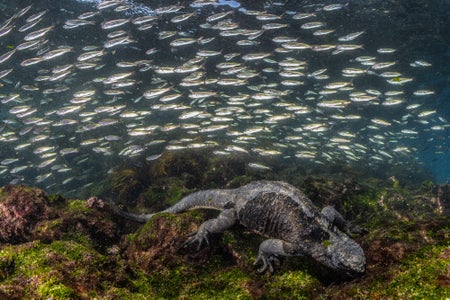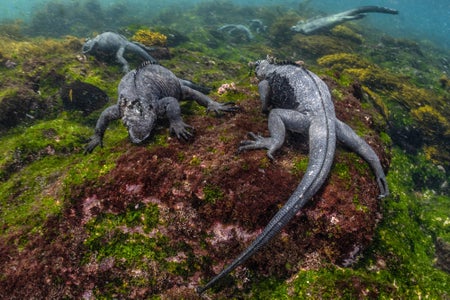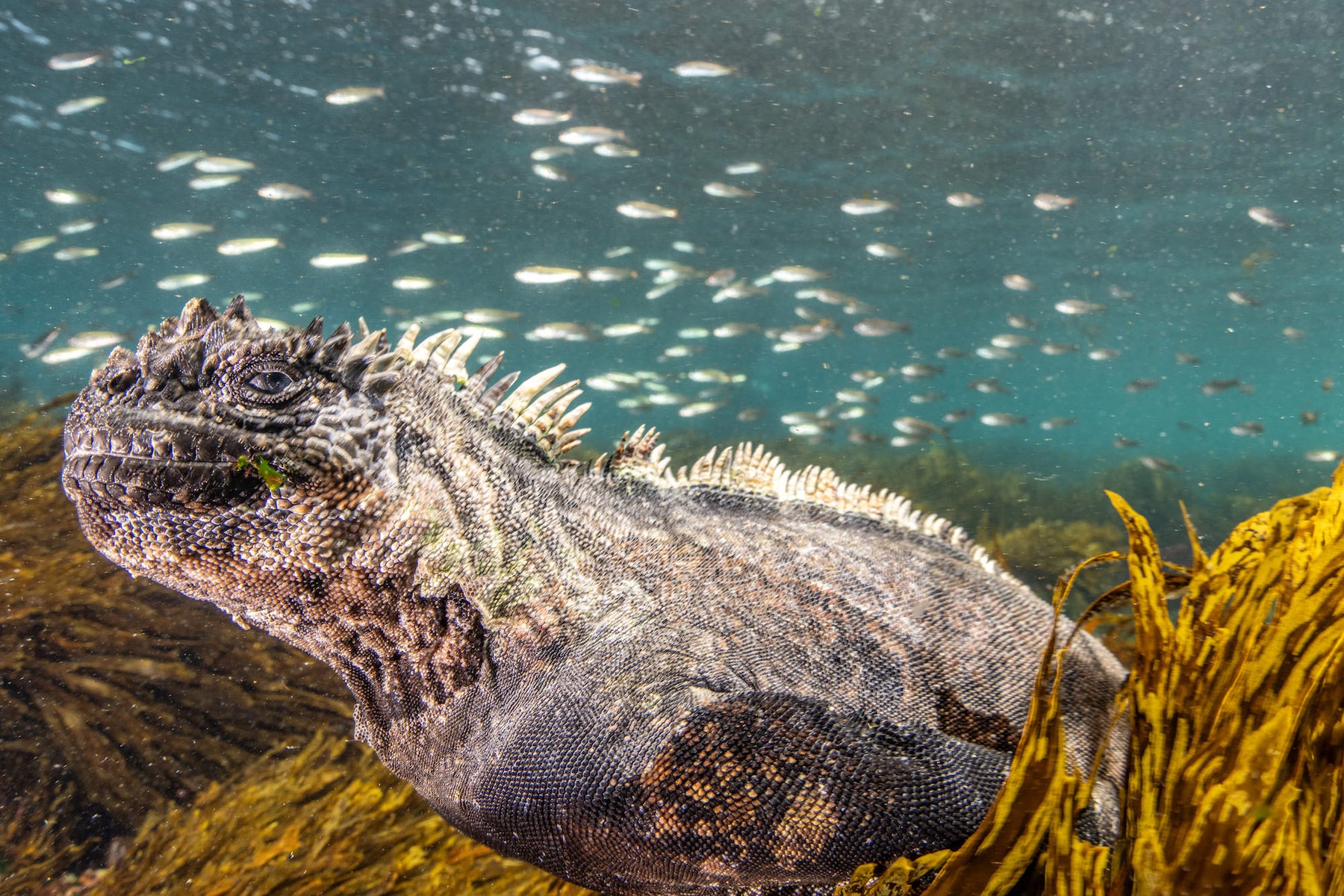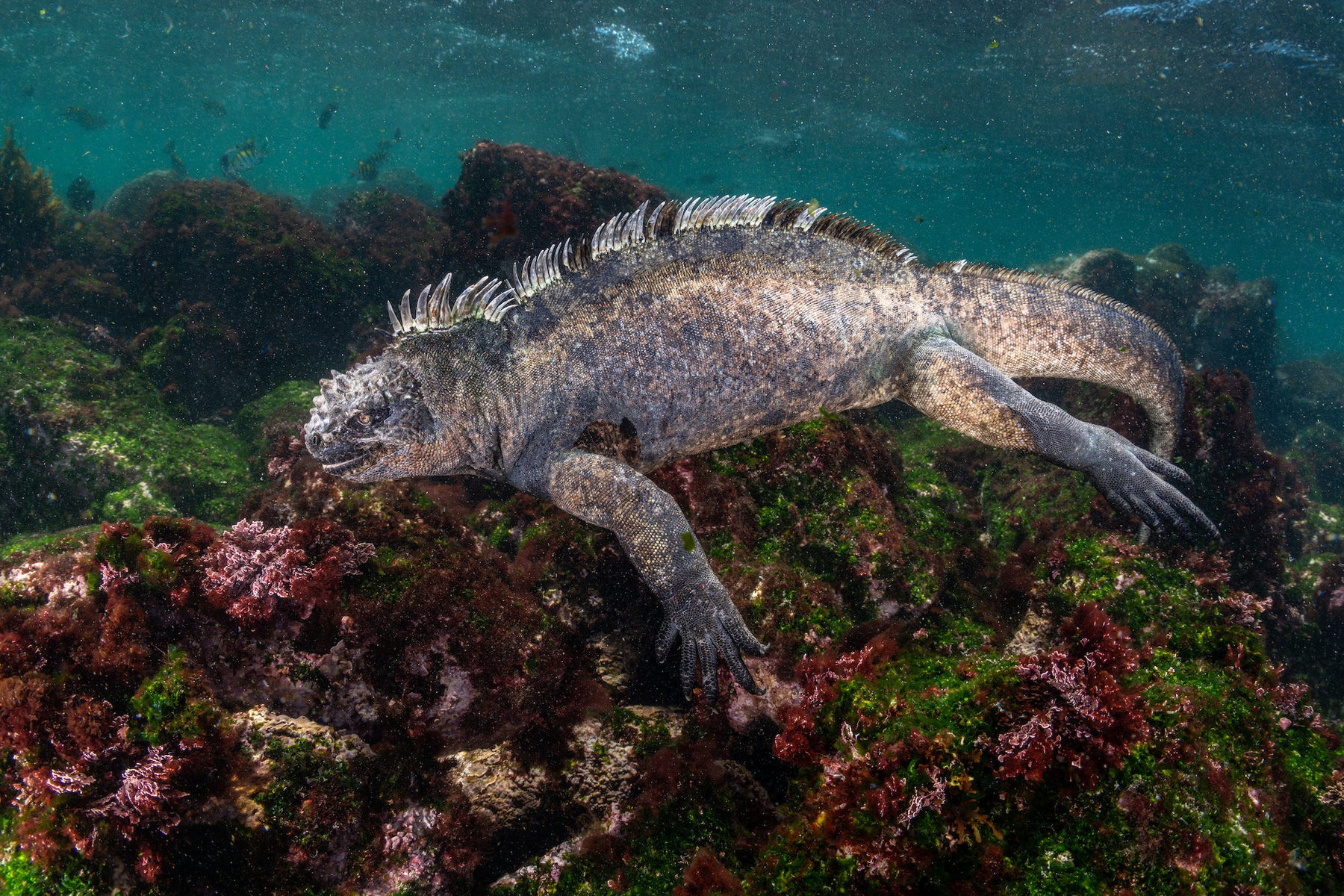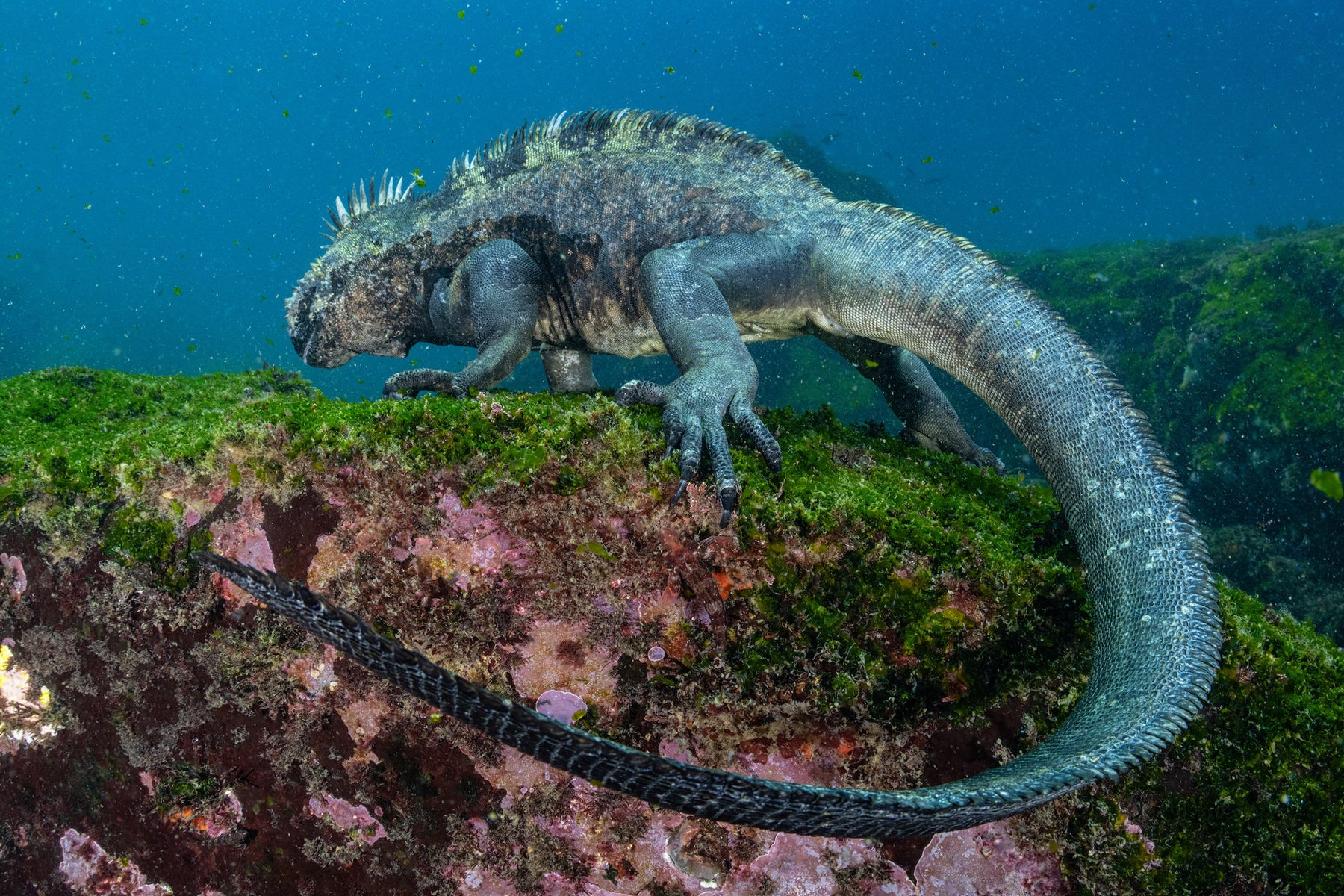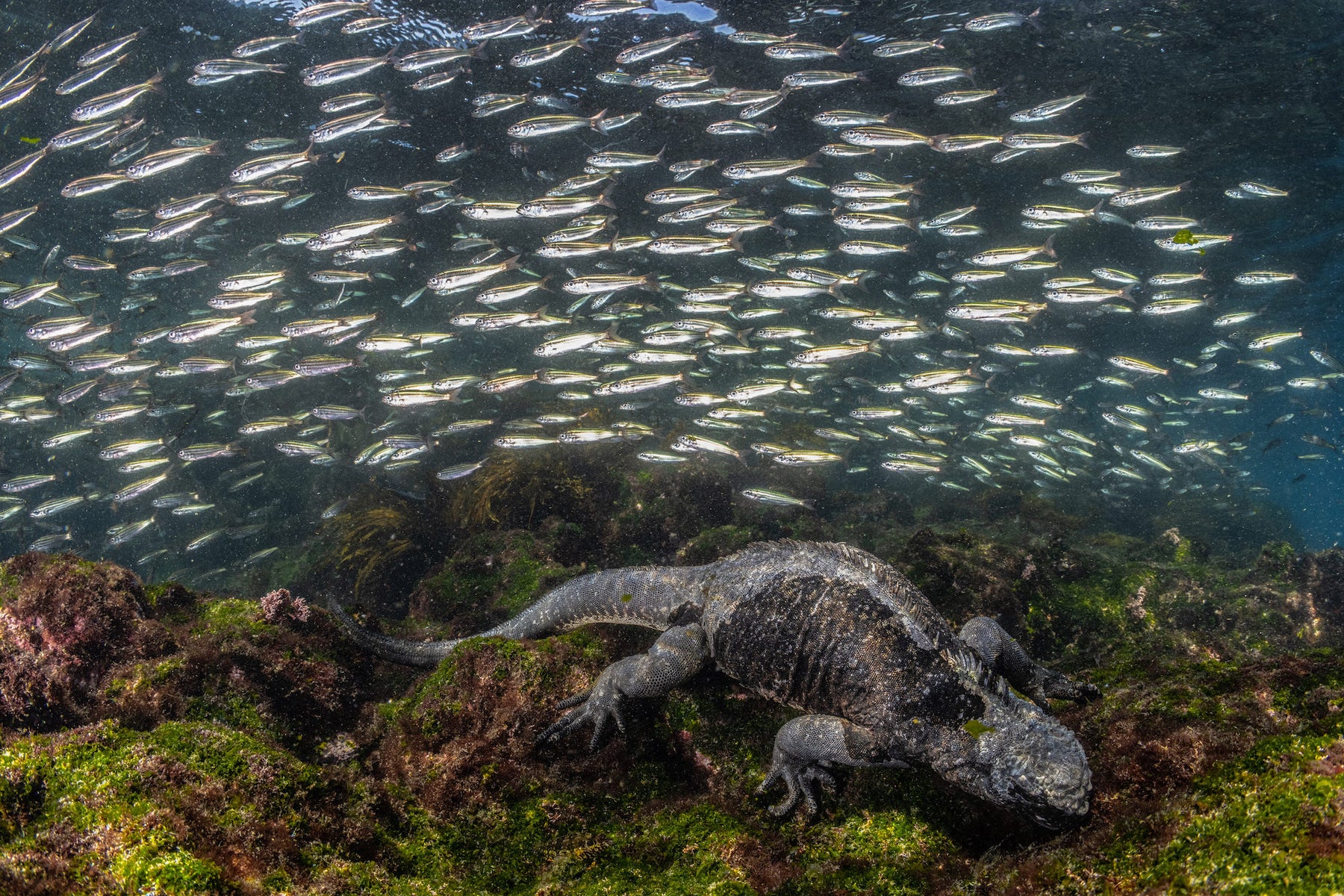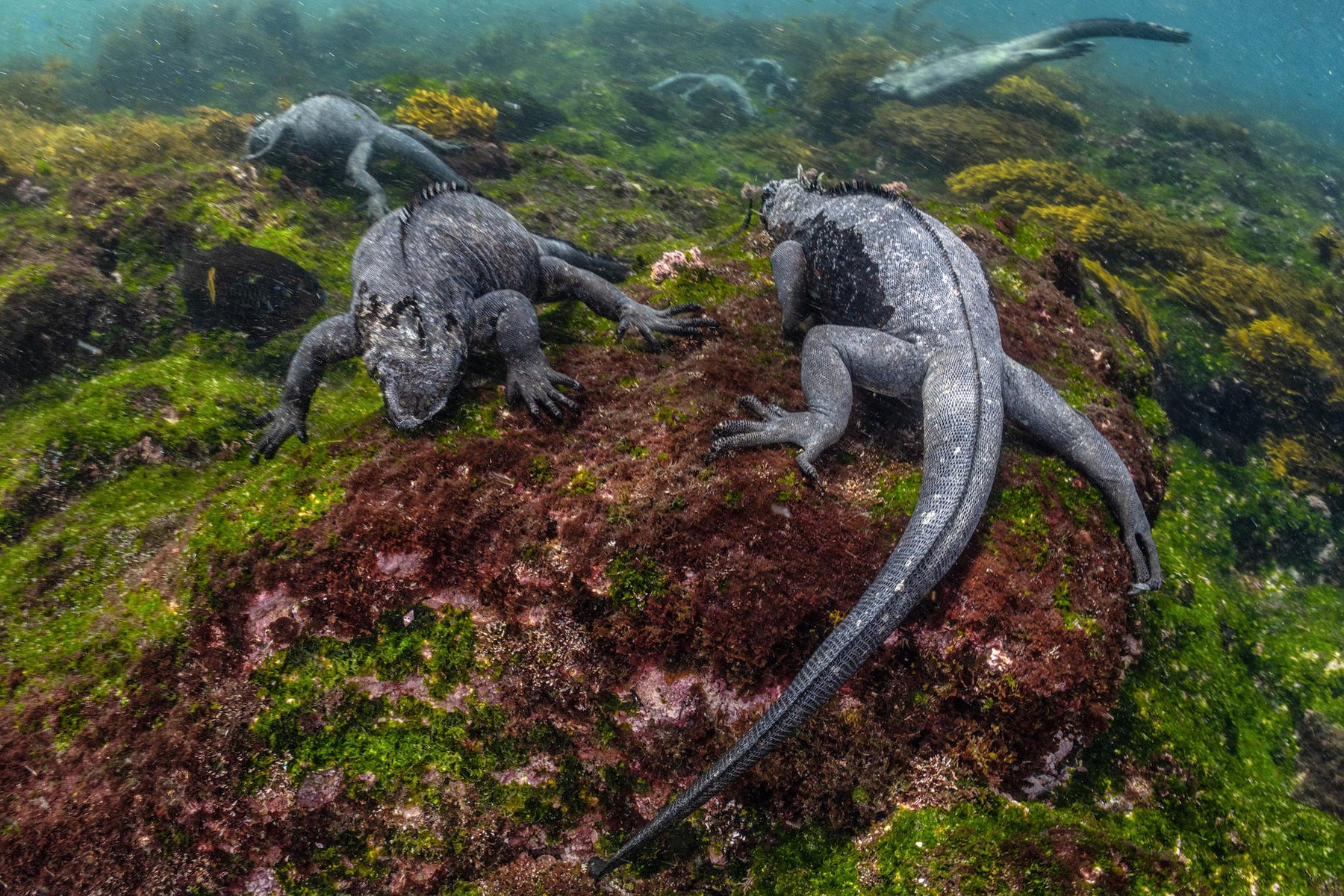In a new Behind The Shot series on the Alpha Universe YouTube Channel, Sony Brand Ambassador and Sea Legacy co-founder Cristina Mittermeier shares her experience photographing the marine iguana. In the video, you can see the challenges of photographing such quick and quirky-looking creatures. We wanted to hear more about the shoot and the conservation efforts behind the images and sat down with Mittermeier for more. Keep reading as she shares how she got the image by shooting what she and fellow Sony Brand Ambassador Paul Nicklen call “the extra 30%”.
Cristina Mittermeier takes us into the waters of the Galapagos Islands with her camera and what she and Sea Legacy co-founder Paul Nicklen call 'the extra 30%.'
Imagery With An Impact
Mittermeier and her SeaLegacy team were on a shoot to photograph the entire eastern pacific seascape – an area that includes the coastal region of Columbia, Panama, Costa Rica and Ecuador. These four countries were working to create the first interconnected system of marine protected areas. “Imagine a migratory swimway,” she explains. Her mission was to document stories of the importance of these protected areas.
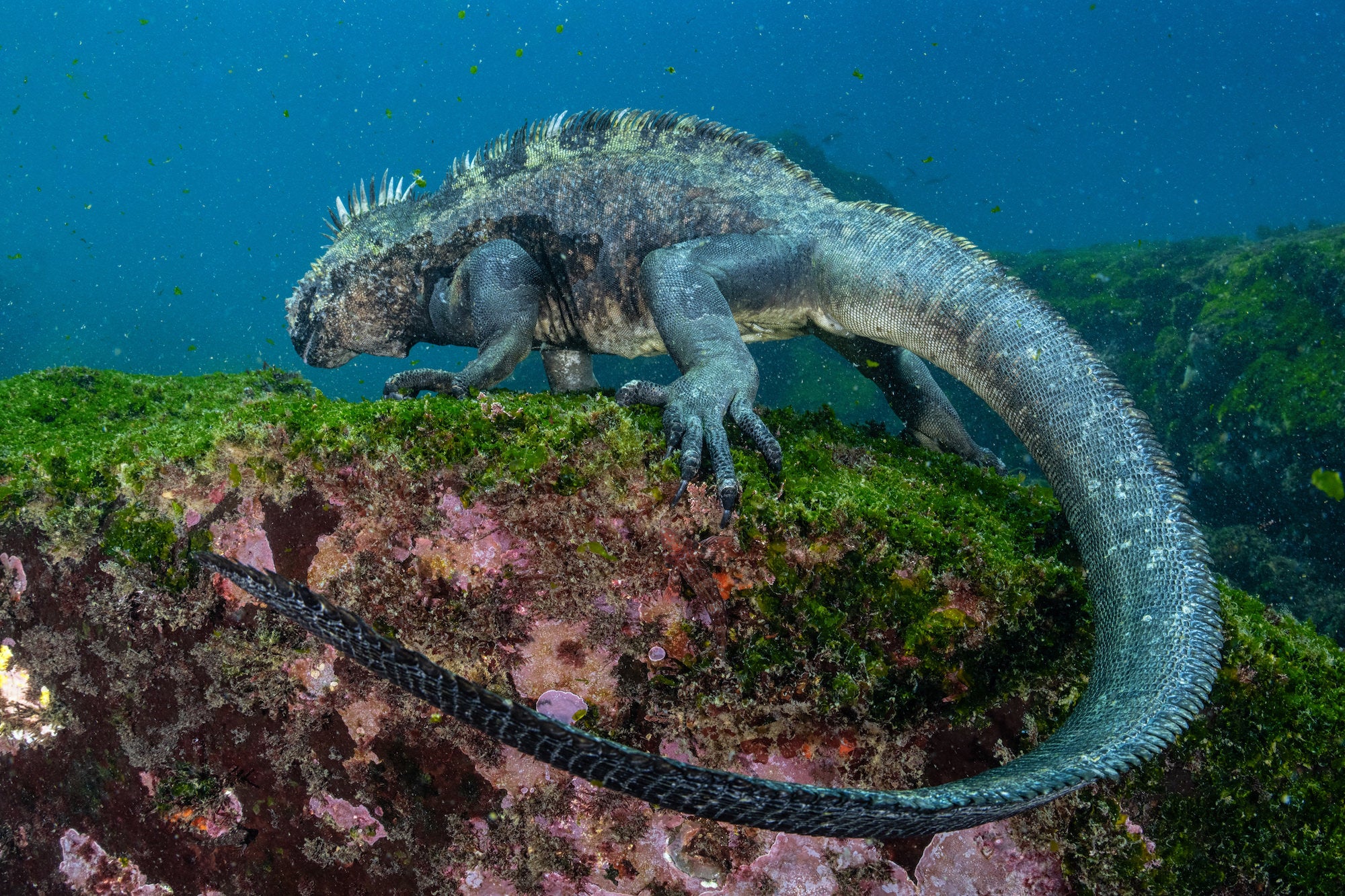
Photo by Cristina Mittermeier.
The team had been to all three other countries and Ecuador was their last stop. They were off the coast of the Galapagos and were hoping to photograph species that are iconic to the region. They knew that by showcasing the animals that would benefit from these protected areas, they could help make an impact. The animals they focused on were the Magellanic penguin, the Flightless cormorant, and of course, the marine iguana.
The Conditions
For her work with SeaLegacy, Mittermeier often shoots far out to sea. She’s in open waters, around massive predators, and dealing with the stresses of those scenarios. On the contrary, this shoot was in shallow waters, close to the shore. “It was so much fun,” she explains, “You're not worried about a shark coming out of the deep. You're not worried about being carried out to sea. You can focus on the fun of it and the images you’re making.”
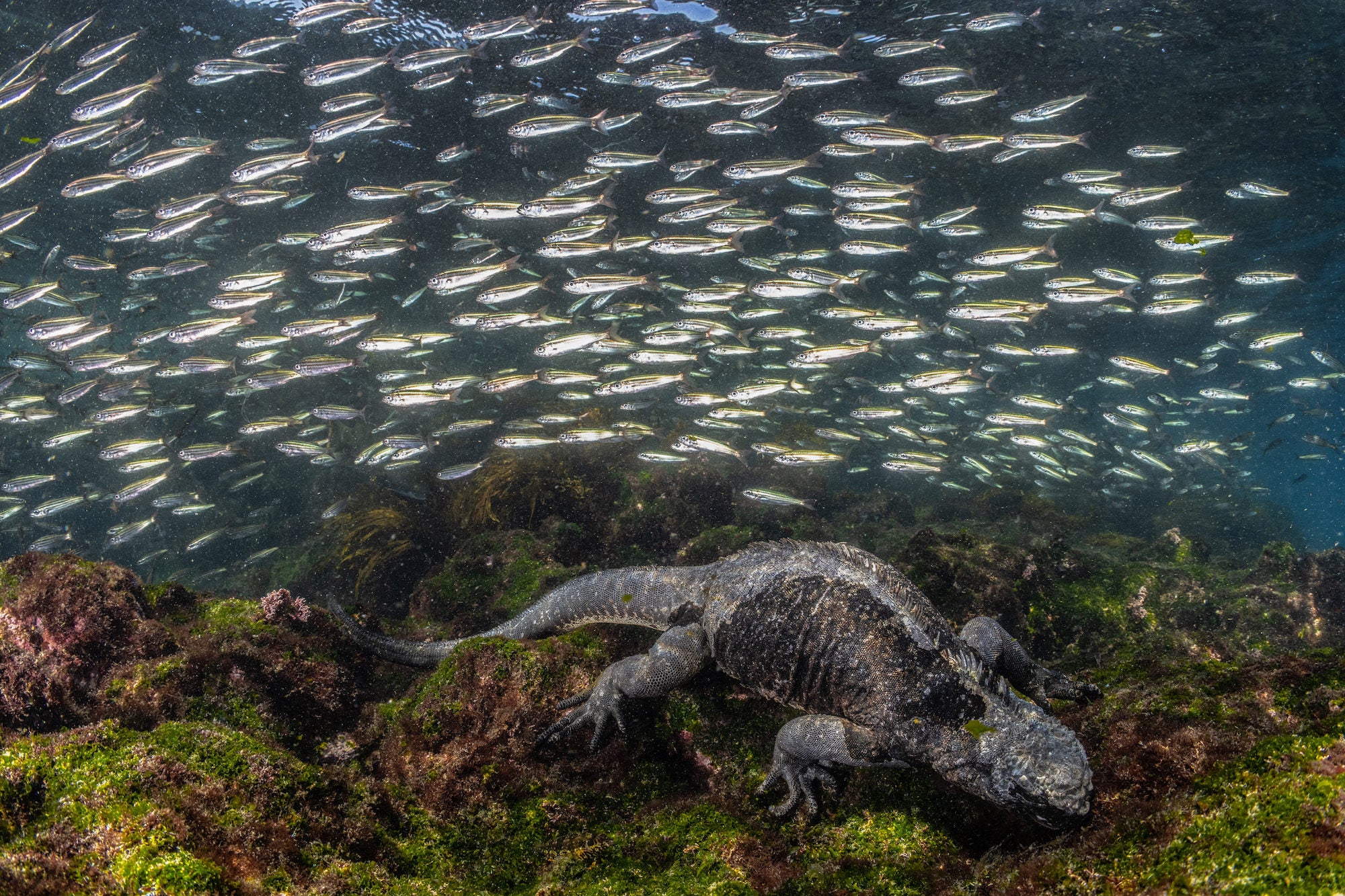
Photo by Cristina Mittermeier.
In terms of the images, as you’ll hear in the video, photographing these fast marine iguanas was no easy feat. Mittermeier says she’s grateful to have had reliable gear that could help her photographic process, rather than get in the way. “I have come to rely so much on Sony’s capabilities as I’m getting older. And so focusing, for example, I don’t even think about anymore because the camera does it so well and can recognize animals. It makes it a lot easier to actually capture something that’s in focus.”
The Extra 30%
Mittermeier is known for compelling and eye-catching imagery, with compositions and techniques that force a viewer to pause over a shot and take it in with awe. She explains that the type of photography she does, the extra 30%, a phrase she got from fellow Sony Brand Ambassador and co-founder of SeaLegacy, Paul Nicklen. In his Masters of Photography class he explains that in the first 30% of a shoot, you spend your time making a usable image. This means that the lighting is good, the composition is fine, it gets across all the information needed for the story. “That’s usually a very boring picture. And that’s where most people get stuck.”
The next 30% of your time, you pull more tools from your photography toolkit. “This is where you think about a longer exposure, maybe adding a flash – you think about getting a different perspective. For this particular shoot, I was fascinated because iguanas come in and they hold on to the rock. And they have all this beautiful golden seaweed that's twirling around them and I was trying to get an iguana kind of enveloped in the seaweed. I wanted to create something that had a little more interest than just one sitting there.”
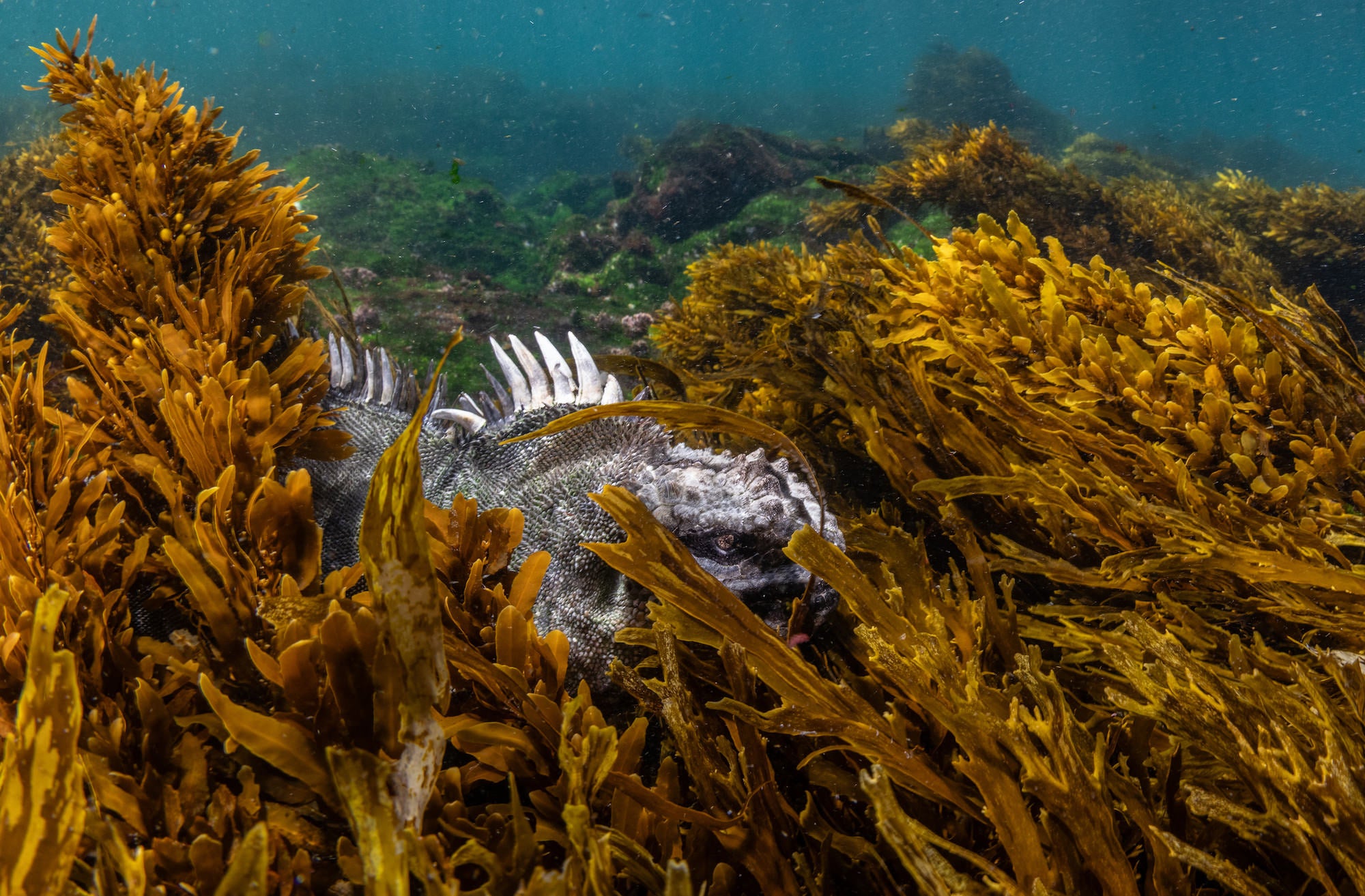
Photo by Cristina Mittermeier.
She goes on to explain that the final 30% is a Hail Mary. The time to try anything else weird or fun that comes to mind. “I was thinking, what happens if I go to a shutter speed of 120-sec.? That’s when things get really interesting, and what I was trying to capture in that last Hail Mary was the motion of the water and the violence of these surge. There's an iguana that’s still and so therefore she's in focus, but everything around her is moving. I got a couple of those and that was exciting.”
“I always say to be a successful photographer you need to conquer fatigue, boredom and just complacency. A lot of photographers go take a couple of shots and they give up. To come up with a brilliant shot. You need to stay the course, keep getting back into the situation, come back when the light is different, withstand all the mosquitoes, the heat, the thirst, the hunger…to stay as long as you need to get the shot, something that's unique and different.”
Conservation Wins
On the last day that the team was shooting, a bunch of dignitaries arrived in the Galapagos to declare the expansion of the Galapagos Marine reserve. They created the first ever interconnected swimway for migratory species. Creating images and stories that connect people to wildlife is crucial for conservation. Without knowing about something, you can’t care about it and storytelling enables audiences to know and care for our environment.
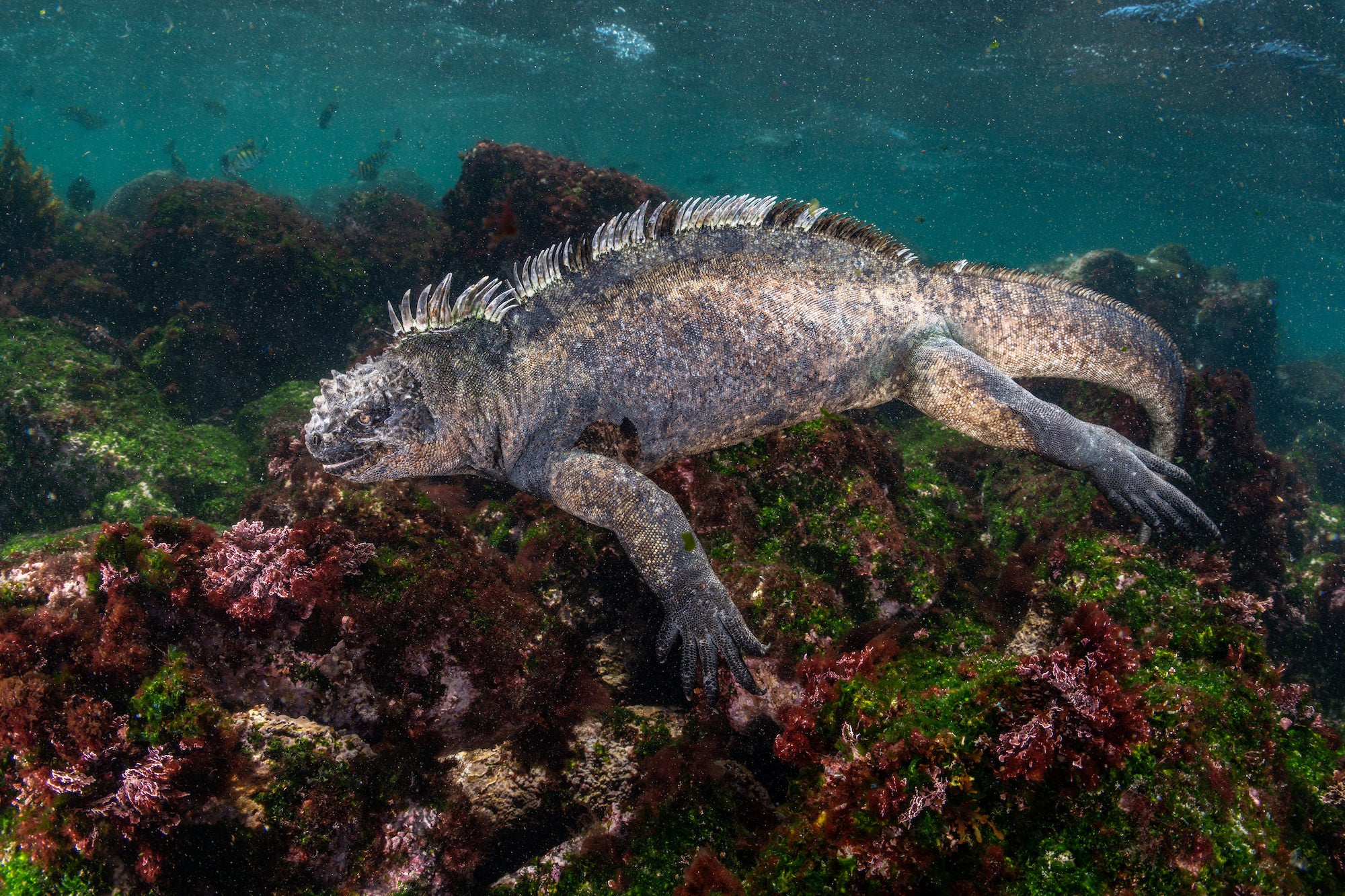
Photo by Cristina Mittermeier.
When reflecting on conservation wins like this one, Mitttermeier says, “I tend to feel like it's a drop in the bucket of what we need to do because the challenge is so massive. But I have learned to not look at how far I have to go instead to look back at how far we've come. And I pat myself a little bit on the back and keep going.”
See more videos like this one on the Alpha Universe YouTube Channel.
